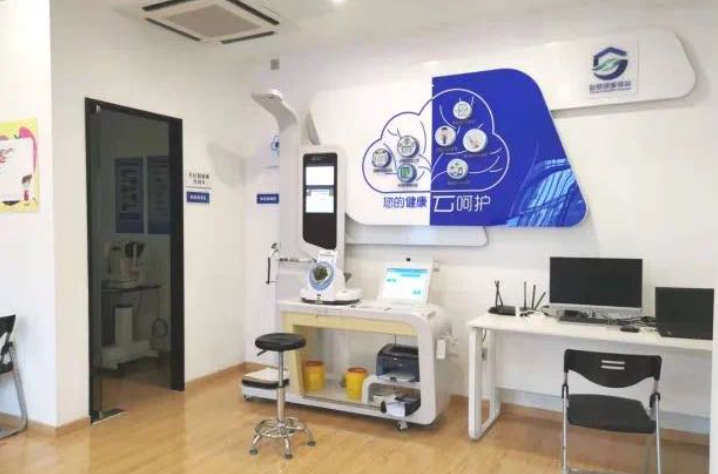政府新闻
中国长三角基层医院推出人工智能辅助眼科筛查 2023-06-07

Grassroots Hospitals in China’s Yangtze River Delta Roll Out AI-Assisted Eye Screening
Community hospitals in China's Yangtze River Delta region, which encompasses Shanghai and the surrounding area, are introducing an artificial intelligence-driven eye screening system that allows residents in the region to be swiftly diagnosed for eye diseases without needing to travel to better equipped hospitals in the cities and also greatly eases the burden on doctors.
"Screening equipment that uses AI and information sharing is being implemented in our hospital,” Yan Yan, president of the Tongshan branch of the First People's Hospital of Xuzhou, told Yicai Global.
The new AI system, which is part of a smart eye screening program launched by the Yangtze River Delta Eye Disease Prevention and Treatment Specialist Alliance in community hospitals on June 3, has not only made life easier for patients, it has also greatly eased doctors’ workloads, Zou Haidong, president of the Shanghai Eye Disease Prevention and Treatment Center, told Yicai Global.
Called the Visual Health Intelligent Management Center, the program includes smart devices used in optometry, eye examinations and photography of the fundus, which is the back of the eye, as well as a remote data management system that handles remote consultations, patient referrals and digital medical history and eye health records.
"The Visual Health Intelligent Management Center enables people in the community to be checked for early-stage eye diseases without the need for an ophthalmologist," Zou said.
"The AI-assisted disease screening program was initially applied to diabetes-related lesions at the back of the eye, and then was gradually extended to other conditions that can lead to blindness," said Ye Zheng, director of the Changfeng Community Health Center in Shanghai’s Putuo district.
The Changfeng Community Health Center’s AI equipment can generate eye examination results within 20 seconds and provide treatment suggestions, Ye said. Last year, it screened the eye health of 5,000 adults and children, accounting for almost 10 percent of the residents in the area, Ye said.
In the past, people could only go to large hospitals in the cities for proper diagnosis, Ye said. It involved waiting in long queues and many elderly people who already had mobility issues were unable to do so, he added.
Before the advent of AI, fundus screening at grassroots hospitals was a laborious and time-consuming process. Images of the back of the eye would be sent to higher-level hospitals and doctors had to spend a lot of time and energy examining the images, Zou said.
If difficult cases are found, they are referred to higher-level hospitals, Yan said. After surgery or treatment in these bigger hospitals, rehabilitation and follow-up consultations can be done in the community hospitals.
Source: Yicai
来源:Yicai
